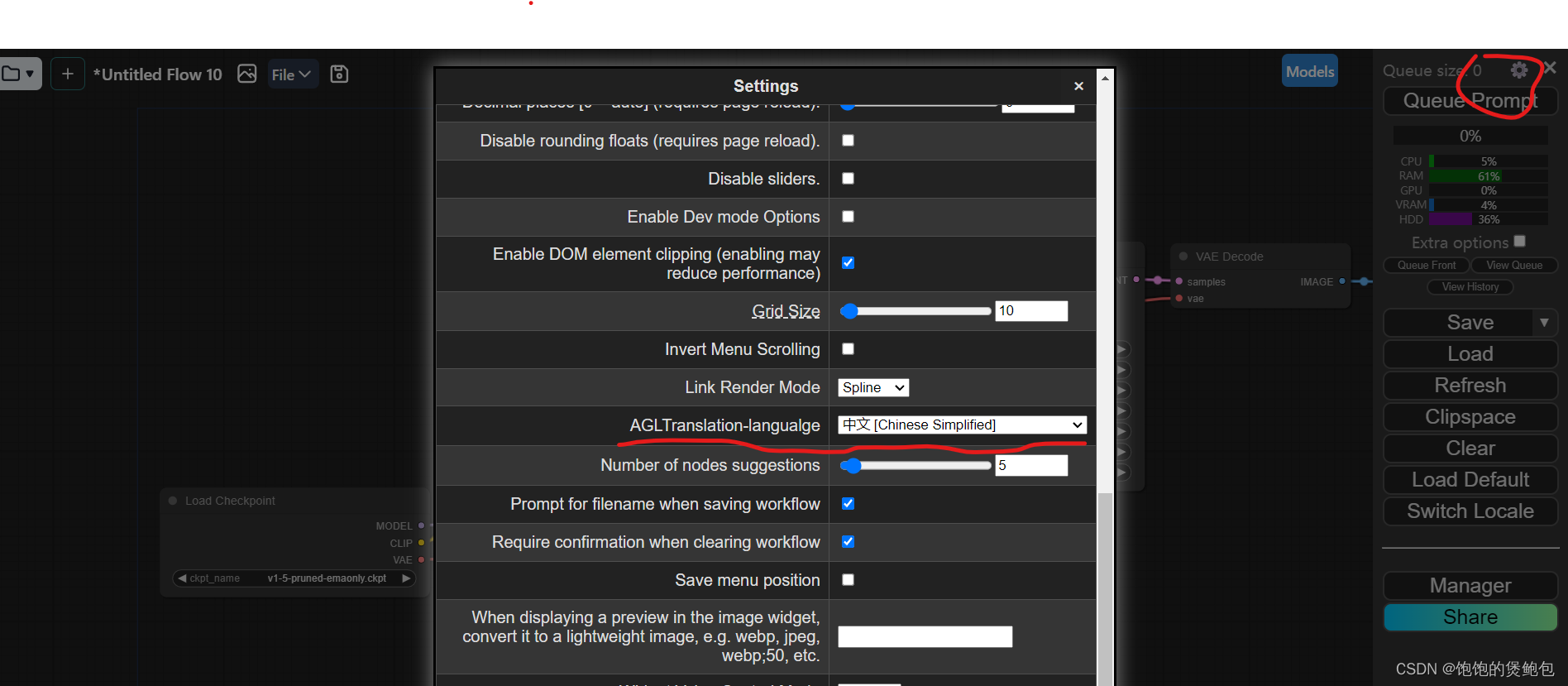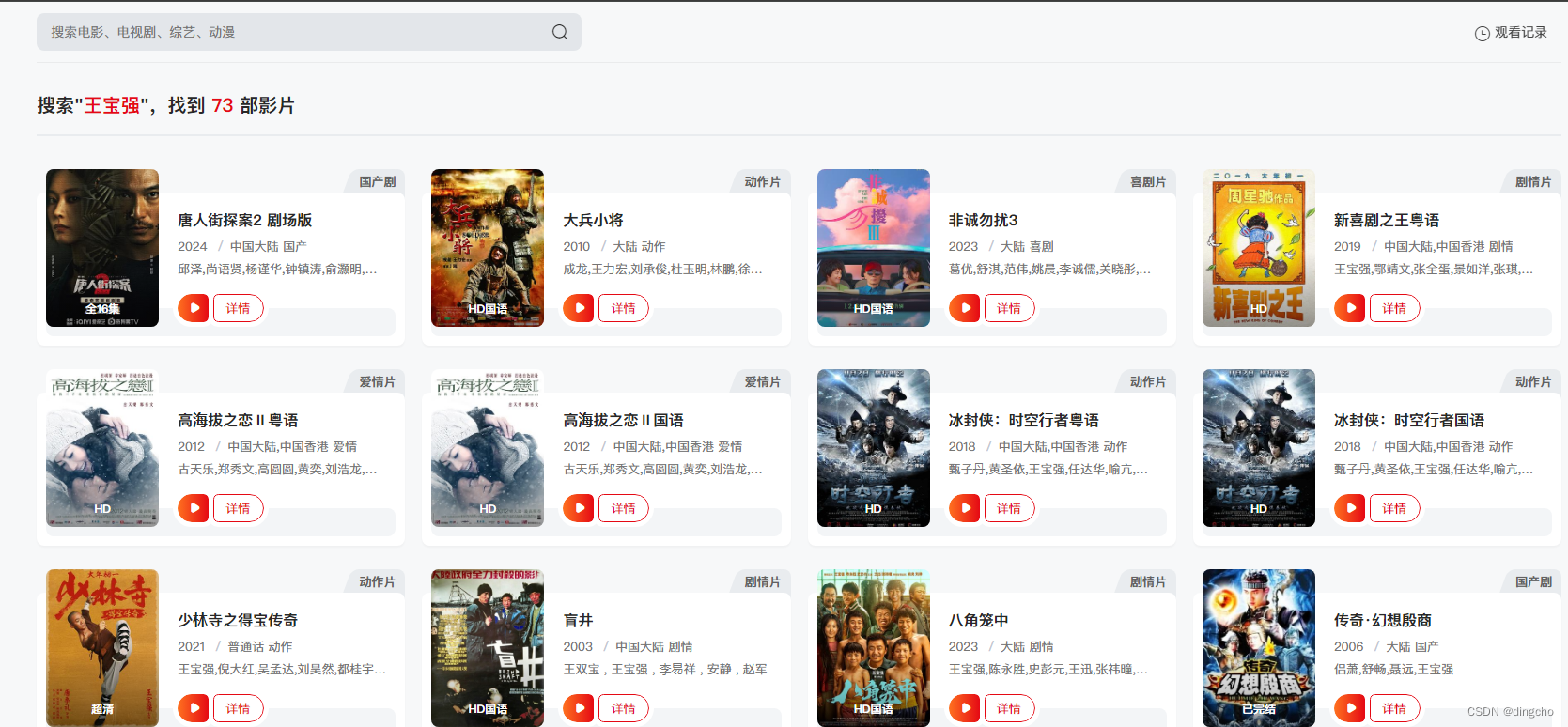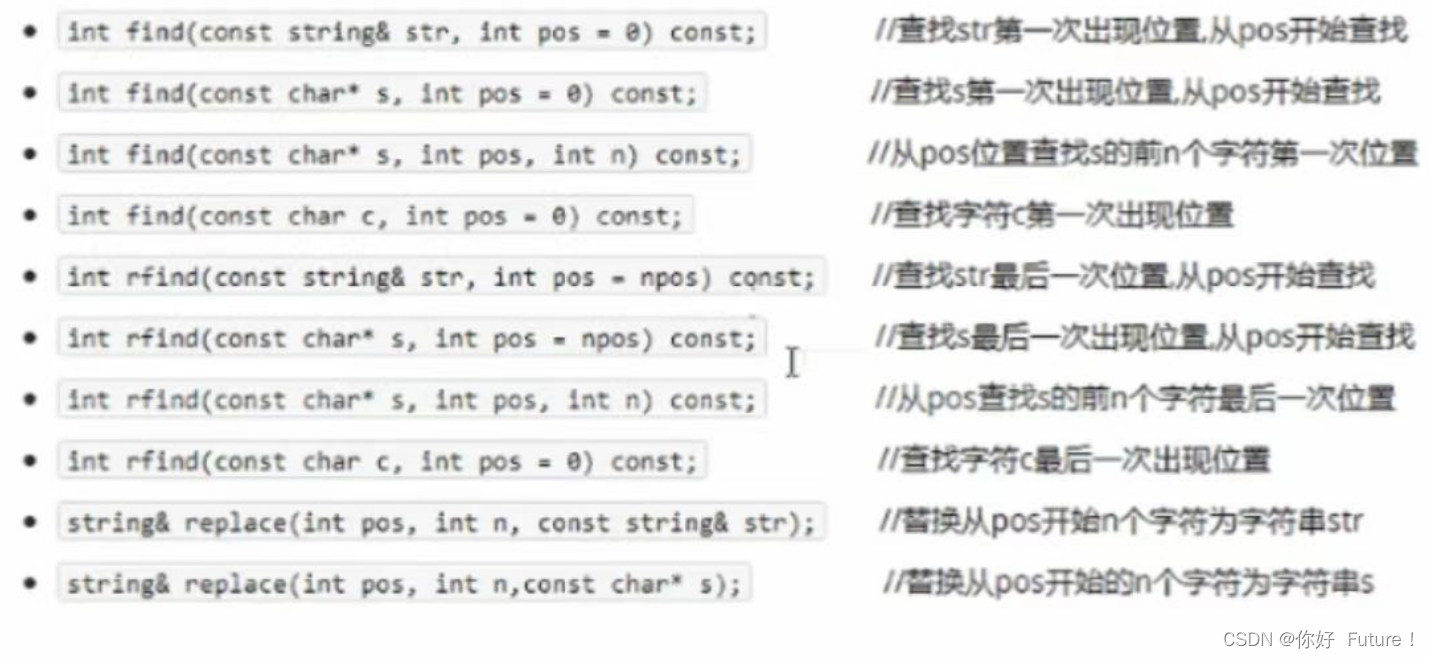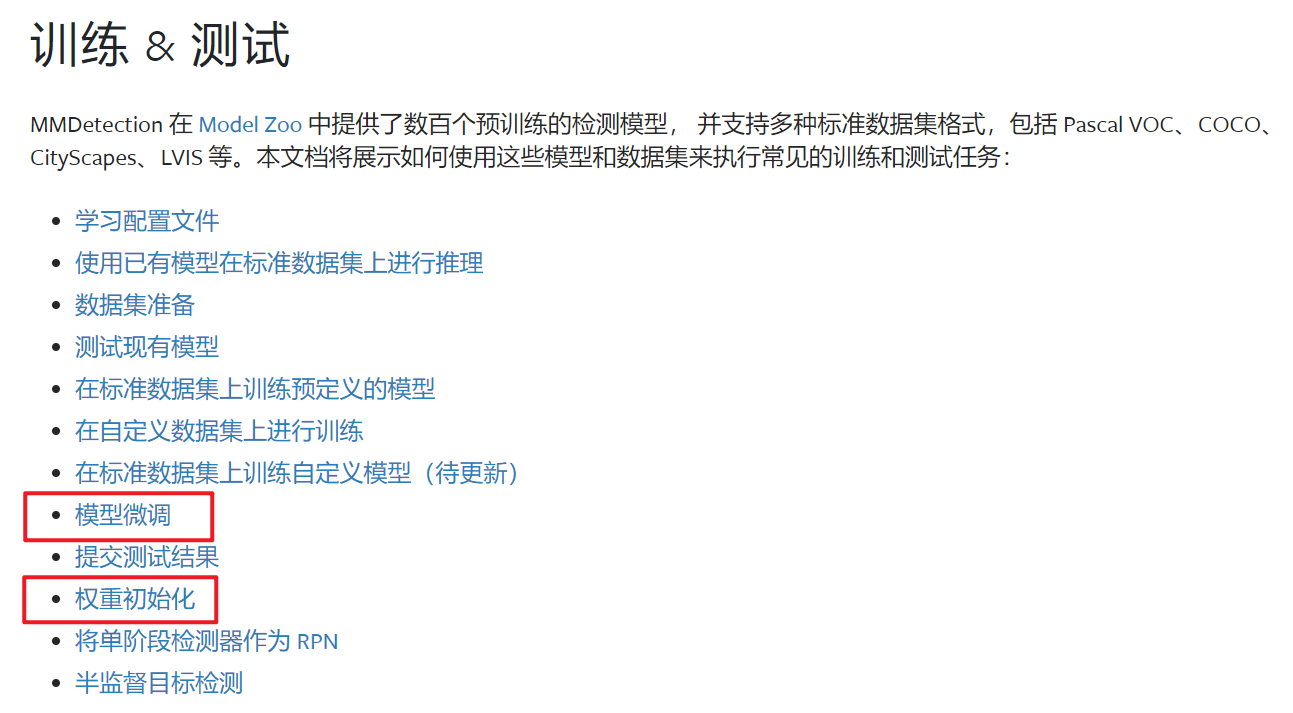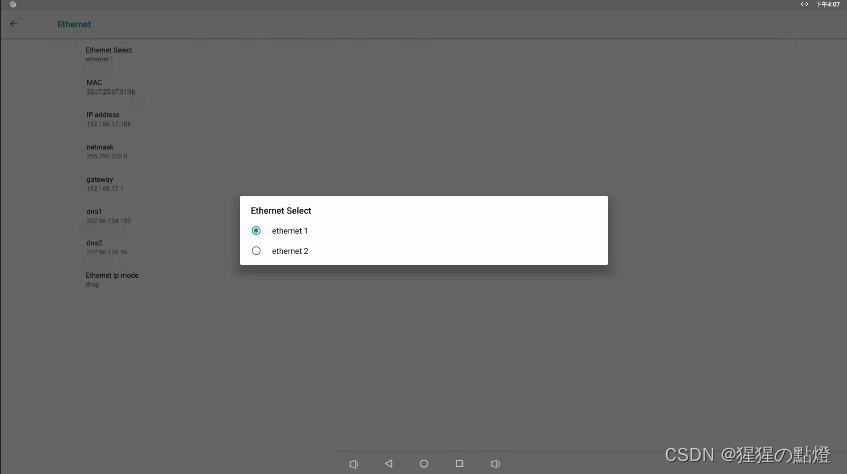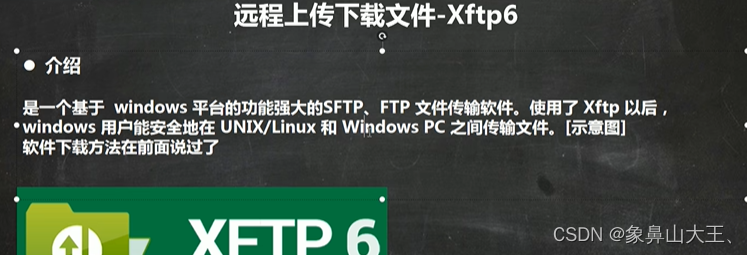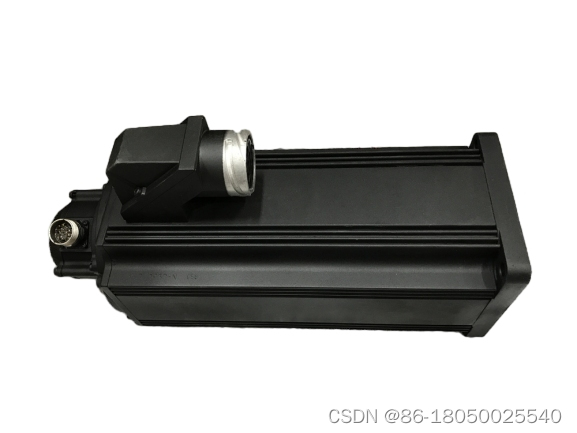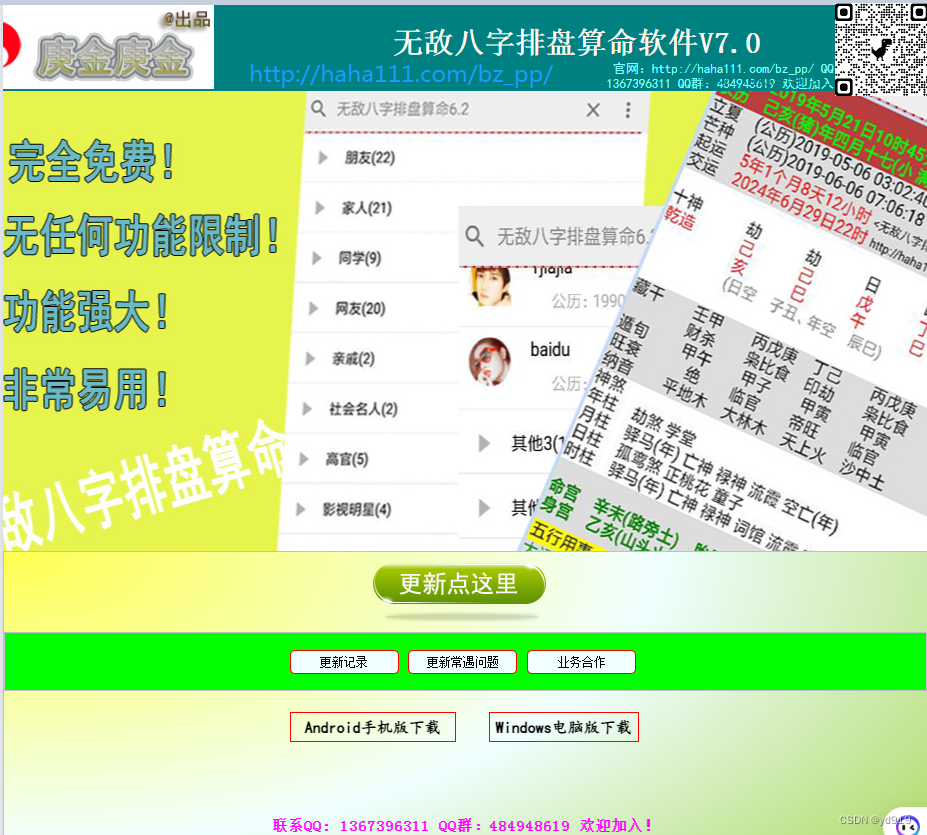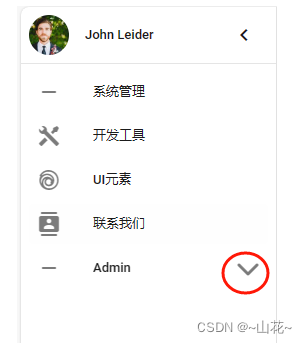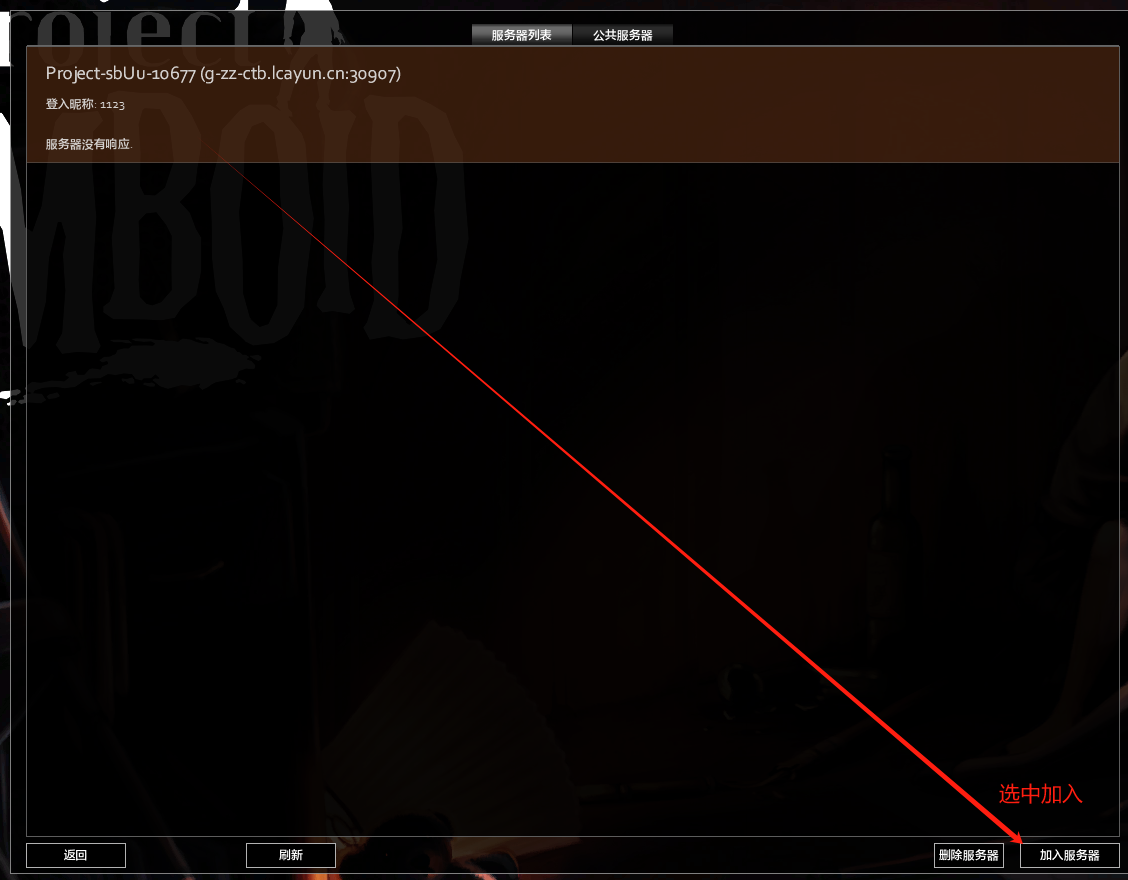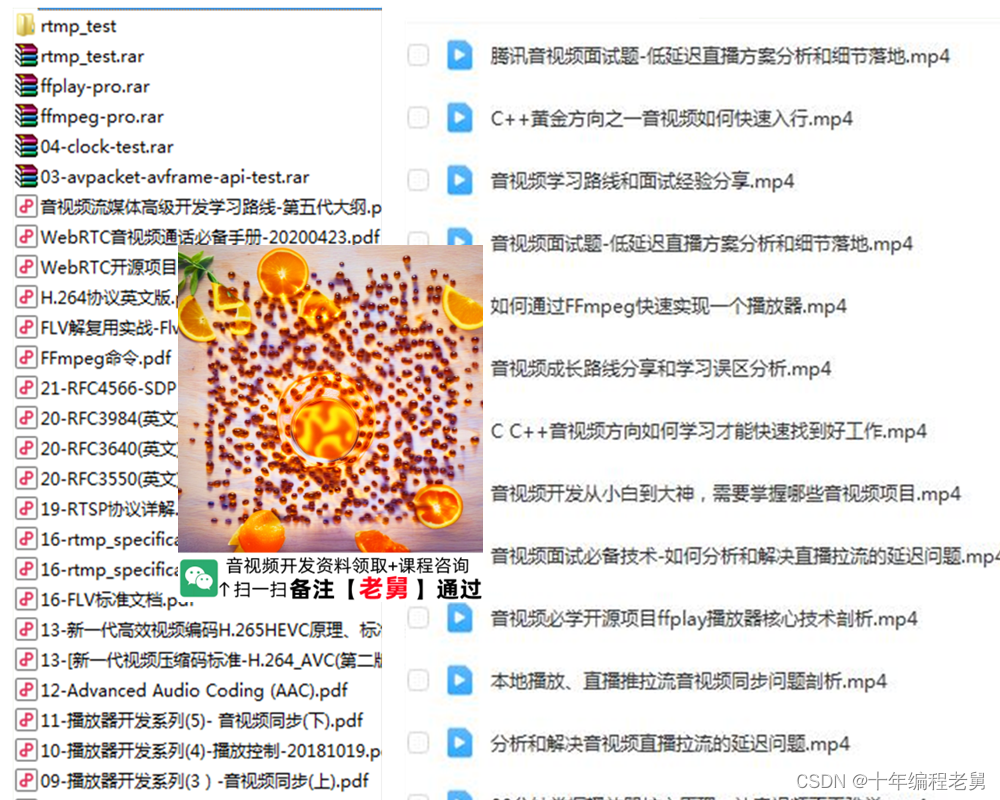https://www.bilibili.com/video/BV1sS411c7Mo
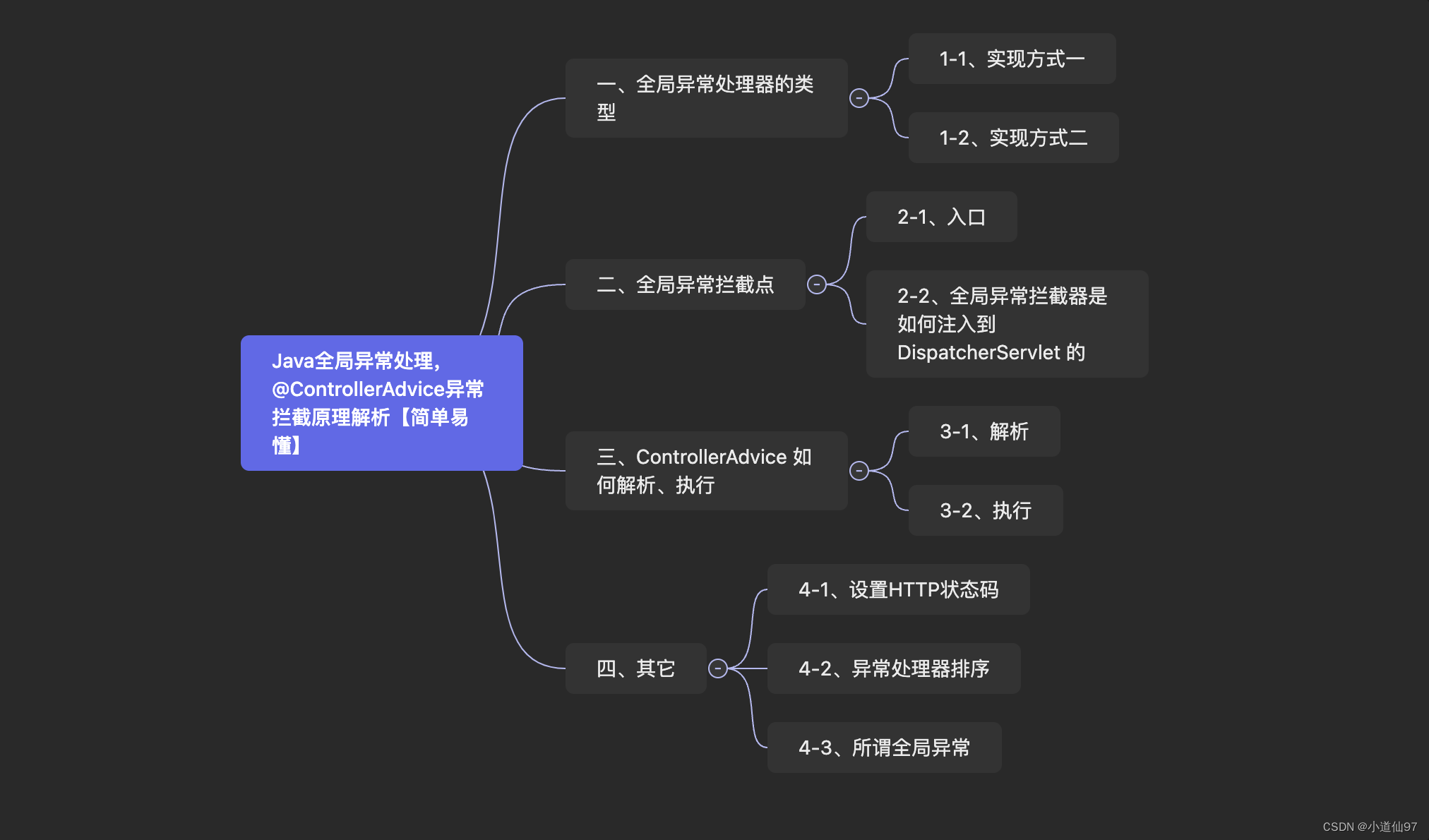
文章目录
- 一、全局异常处理器的类型
- 1-1、实现方式一
- 1-2、实现方式二
- 二、全局异常拦截点
- 2-1、入口
- 2-2、全局异常拦截器是如何注入到 DispatcherServlet 的
- 三、ControllerAdvice 如何解析、执行
- 3-1、解析
- 3-2、执行
- 四、其它
- 4-1、设置HTTP状态码
- 4-2、异常处理器排序
- 4-3、所谓全局异常
最近在做系统升级的时候,引发了一个BUG,原本系统是有一个异常处理器A,引入了某个底包中也带了一个异常处理器B,最终走了底包的异常处理器B。 A对于异常的时候会返回HTTP状态码为500,B对于异常处理器返回的HTTP状态码为200,前端基于HTTP状态码进行提示的,就出了问题
本篇文章我们就来讨论一下在JavaWeb中的全局异常处理器是何时何地如何执行的。
在进行学习之前需要先知道:HTTP执行流程,SpringMVC执行流程
一、全局异常处理器的类型
全局异常处理器的父接口是 HandlerExceptionResolver,简单来说就是实现或间接实现它的类就叫全局异常处理器。
package org.springframework.web.servlet;
import javax.servlet.http.HttpServletRequest;
import javax.servlet.http.HttpServletResponse;
import org.springframework.lang.Nullable;
public interface HandlerExceptionResolver {
@Nullable
ModelAndView resolveException(HttpServletRequest request, HttpServletResponse response, @Nullable Object handler, Exception ex);
}
HandlerExceptionResolver 的继承关系图

1-1、实现方式一
SpringBoot项目最大的特点就是注解,在SpringBoot项目中全局异常拦截的注解是@ControllerAdvice (@RestControllerAdvice = @ControllerAdvice + @ResponseBody)
使用 @ControllerAdvice的类最终会生成 ExceptionHandlerExceptionResolver
1-2、实现方式二
重写 doResolveHandlerMethodException 方法,然后注册当前的bean
public class ExceptionHandler extends AbstractHandlerMethodExceptionResolver {
private final static Logger logger = LoggerFactory.getLogger(ExceptionHandler.class);
@Override
protected ModelAndView doResolveHandlerMethodException(HttpServletRequest request, HttpServletResponse response, HandlerMethod handlerMethod, Exception ex) {
return new ModelAndView();
}
}
二、全局异常拦截点
2-1、入口
org.springframework.web.servlet.DispatcherServlet#doDispatch 这个方法就是SpringMVC的执行流程的核心代码了,下面是简化代码
protected void doDispatch(HttpServletRequest request, HttpServletResponse response) throws Exception {
HttpServletRequest processedRequest = request;
HandlerExecutionChain mappedHandler = null;
boolean multipartRequestParsed = false;
WebAsyncManager asyncManager = WebAsyncUtils.getAsyncManager(request);
try {
ModelAndView mv = null;
Exception dispatchException = null;
try {
// ...
mv = ha.handle(processedRequest, response, mappedHandler.getHandler());
// ....
}
catch (Exception ex) {
dispatchException = ex;
}
catch (Throwable err) {
dispatchException = new NestedServletException("Handler dispatch failed", err);
}
// 异常处理的入口
processDispatchResult(processedRequest, response, mappedHandler, mv, dispatchException);
}
catch (Exception ex) {
// ....
}
catch (Throwable err) {
// ....
}
finally {
// ...
}
}
org.springframework.web.servlet.DispatcherServlet#processDispatchResult
private void processDispatchResult(HttpServletRequest request, HttpServletResponse response,
@Nullable HandlerExecutionChain mappedHandler, @Nullable ModelAndView mv,
@Nullable Exception exception) throws Exception {
boolean errorView = false;
if (exception != null) {
Object handler = (mappedHandler != null ? mappedHandler.getHandler() : null);
// 异常处理
mv = processHandlerException(request, response, handler, exception);
errorView = (mv != null);
}
// ...
}
org.springframework.web.servlet.DispatcherServlet#processHandlerException
protected ModelAndView processHandlerException(HttpServletRequest request, HttpServletResponse response,
@Nullable Object handler, Exception ex) throws Exception {
// Success and error responses may use different content types
request.removeAttribute(HandlerMapping.PRODUCIBLE_MEDIA_TYPES_ATTRIBUTE);
// Check registered HandlerExceptionResolvers...
ModelAndView exMv = null;
if (this.handlerExceptionResolvers != null) {
// 遍历循环所有的拦截器来尝试处理这个异常(拦截器已经按照 order 排好序了)
for (HandlerExceptionResolver resolver : this.handlerExceptionResolvers) {
exMv = resolver.resolveException(request, response, handler, ex);
// 只有返回了 ModelAndView 才结束,不然一直往下走
if (exMv != null) {
break;
}
}
}
// ...
// 如果没有全局异常处理器 可以处理这个异常 就继续抛出去
throw ex;
}
2-2、全局异常拦截器是如何注入到 DispatcherServlet 的
上面看到是从 handlerExceptionResolvers 从获取所有的异常处理器,它是一个list
@Nullable
private List<HandlerExceptionResolver> handlerExceptionResolvers;
在DispatcherServlet里面有一个onRefresh方法,它是重写的父类FrameworkServlet的,在初始化ServletBean的时候会被调用一次,它里面会做很多初始化的操作,其中一个就是获取容器里面的全局异常拦截器
一层层看上去其实是 Servlet接口的 init方法触发的
@Override
protected void onRefresh(ApplicationContext context) {
initStrategies(context);
}
protected void initStrategies(ApplicationContext context) {
// ...
initHandlerExceptionResolvers(context);
// ...
}
找到bean容器里面的所有异常拦截器,把它存在 handlerExceptionResolvers 里面,并排序
private void initHandlerExceptionResolvers(ApplicationContext context) {
this.handlerExceptionResolvers = null;
if (this.detectAllHandlerExceptionResolvers) {
// 从bean容器里面找到所有的 HandlerExceptionResolver
Map<String, HandlerExceptionResolver> matchingBeans = BeanFactoryUtils
.beansOfTypeIncludingAncestors(context, HandlerExceptionResolver.class, true, false);
if (!matchingBeans.isEmpty()) {
this.handlerExceptionResolvers = new ArrayList<>(matchingBeans.values());
// 排序
AnnotationAwareOrderComparator.sort(this.handlerExceptionResolvers);
}
}
// ...
}
三、ControllerAdvice 如何解析、执行
3-1、解析
在springframework 中有这样一个类 ExceptionHandlerExceptionResolver
package org.springframework.web.servlet.mvc.method.annotation;
public class ExceptionHandlerExceptionResolver extends AbstractHandlerMethodExceptionResolver
implements ApplicationContextAware, InitializingBean {
// ...
}
⚠️:可以回到【全局异常处理器的类型】的图看看,ExceptionHandlerExceptionResolver其实就是全局异常处理器HandlerExceptionResolver的子类
它实现了 InitializingBean,重写了afterPropertiesSet(这个方法会在bean初始化完之后执行)
@Override
public void afterPropertiesSet() {
// Do this first, it may add ResponseBodyAdvice beans
initExceptionHandlerAdviceCache();
// ...
}
initExceptionHandlerAdviceCache 会把所有使用了@ControllerAdvice 的bean找到并把它存在自己的参数里面
private final Map<ControllerAdviceBean, ExceptionHandlerMethodResolver> exceptionHandlerAdviceCache = new LinkedHashMap<>();
private void initExceptionHandlerAdviceCache() {
if (getApplicationContext() == null) {
return;
}
// 找到所有使用了 @ControllerAdvice 的bean
List<ControllerAdviceBean> adviceBeans = ControllerAdviceBean.findAnnotatedBeans(getApplicationContext());
for (ControllerAdviceBean adviceBean : adviceBeans) {
Class<?> beanType = adviceBean.getBeanType();
if (beanType == null) {
throw new IllegalStateException("Unresolvable type for ControllerAdviceBean: " + adviceBean);
}
// 解析全部的 ExceptionHandler 注解
ExceptionHandlerMethodResolver resolver = new ExceptionHandlerMethodResolver(beanType);
if (resolver.hasExceptionMappings()) {
// 存入当前的类参数里面
this.exceptionHandlerAdviceCache.put(adviceBean, resolver);
}
if (ResponseBodyAdvice.class.isAssignableFrom(beanType)) {
this.responseBodyAdvice.add(adviceBean);
}
}
// ...
}
org.springframework.web.method.ControllerAdviceBean#findAnnotatedBeans
public static List<ControllerAdviceBean> findAnnotatedBeans(ApplicationContext context) {
ListableBeanFactory beanFactory = context;
if (context instanceof ConfigurableApplicationContext) {
// Use internal BeanFactory for potential downcast to ConfigurableBeanFactory above
beanFactory = ((ConfigurableApplicationContext) context).getBeanFactory();
}
List<ControllerAdviceBean> adviceBeans = new ArrayList<>();
// 遍历所有的bean
for (String name : BeanFactoryUtils.beanNamesForTypeIncludingAncestors(beanFactory, Object.class)) {
if (!ScopedProxyUtils.isScopedTarget(name)) {
// 找到符合的bean
ControllerAdvice controllerAdvice = beanFactory.findAnnotationOnBean(name, ControllerAdvice.class);
if (controllerAdvice != null) {
// 存起来
adviceBeans.add(new ControllerAdviceBean(name, beanFactory, controllerAdvice));
}
}
}
// 排序
OrderComparator.sort(adviceBeans);
return adviceBeans;
}
配合@ControllerAdvice 注解的通常是 @ExceptionHandler 它用来制定具体的异常,把所有的 ExceptionHandler都存入了 mappedMethods 中org.springframework.web.method.annotation.ExceptionHandlerMethodResolver#ExceptionHandlerMethodResolver
public ExceptionHandlerMethodResolver(Class<?> handlerType) {
for (Method method : MethodIntrospector.selectMethods(handlerType, EXCEPTION_HANDLER_METHODS)) {
for (Class<? extends Throwable> exceptionType : detectExceptionMappings(method)) {
addExceptionMapping(exceptionType, method);
}
}
}
private void addExceptionMapping(Class<? extends Throwable> exceptionType, Method method) {
Method oldMethod = this.mappedMethods.put(exceptionType, method);
if (oldMethod != null && !oldMethod.equals(method)) {
throw new IllegalStateException("Ambiguous @ExceptionHandler method mapped for [" +
exceptionType + "]: {" + oldMethod + ", " + method + "}");
}
}
至此@ControllerAdvice的解析完成
- 生成了一个ExceptionHandlerExceptionResolver,它通过多级实现了 HandlerExceptionResolver
- 所有使用@ControllerAdvice的类都存在了 exceptionHandlerAdviceCache 中
- 所有使用 @ExceptionHandler 的方法否存在了mappedMethods 中
3-2、执行
- 从【2-1】得知,执行异常处理器的时候是执行 HandlerExceptionResolver.resolveException方法(它只有这一个方法)
- 从【3-1】得知,所有使用 @ControllerAdvice 注解的类都被存在了ExceptionHandlerExceptionResolver 中
- 从【1】得知,ExceptionHandlerExceptionResolver的继承关系如下图
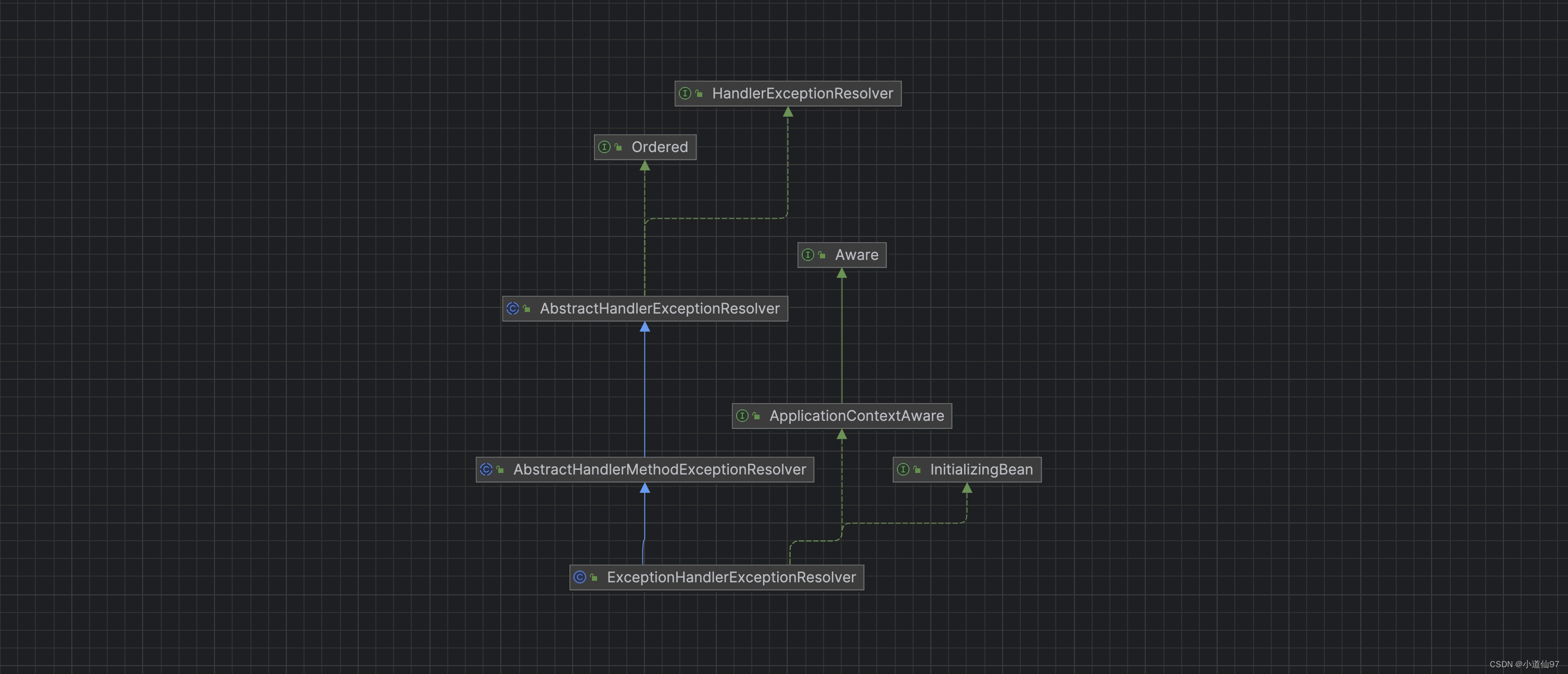
一层层去看调用关系,最终会执行的是 (这个很简单直接去看即可)org.springframework.web.servlet.mvc.method.annotation.ExceptionHandlerExceptionResolver#doResolveHandlerMethodException
执行过程就是循环exceptionHandlerAdviceCache中的每一个全局拦截器,再循环每个拦截器里面的mappedMethods看哪个可以匹配上,就执行哪个
四、其它
4-1、设置HTTP状态码
大多数情况下我们会自定义返回值code,比如未鉴权,返回给前端HTTP状态码是200,code为401,但在某些情况下也会直接返回HTTP状态码401,可以使用 @ResponseStatus
@ResponseStatus(HttpStatus.UNAUTHORIZED)
@ExceptionHandler(Exception.class)
public ResultObj bizExceptionHandler(Exception e) {
log.info("全局异常拦截", e);
return ResultObj.success();
}
4-2、异常处理器排序
springframework 里面提供了一个Ordered 接口,实现它重写里面 getOrder 方法就可以进行排序了
4-3、所谓全局异常
并不是系统任何异常都会被它所拦截,因为我们已经知道它的执行点是在MVC的流程中,所以就只有HTTP异常才会被拦截处理

